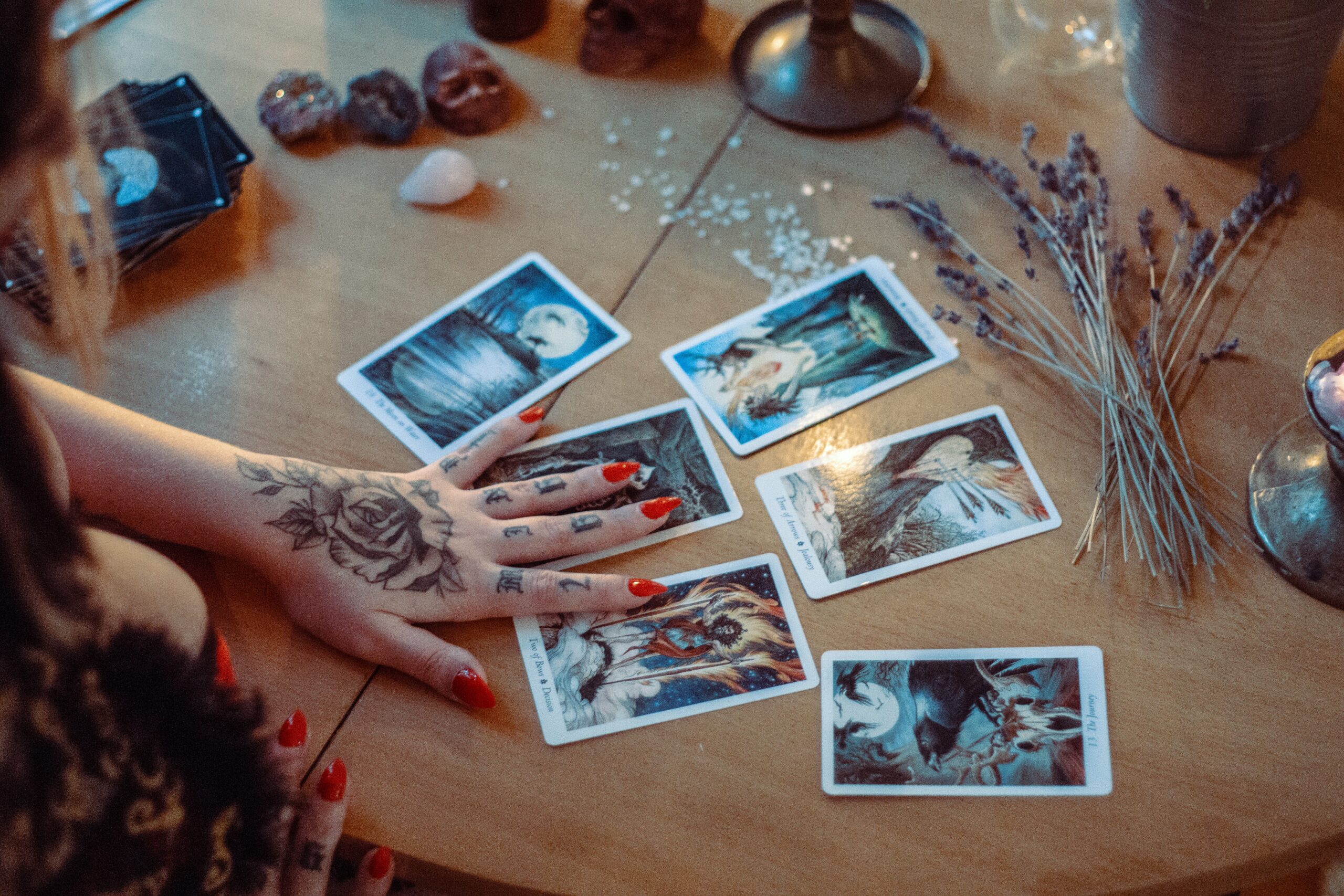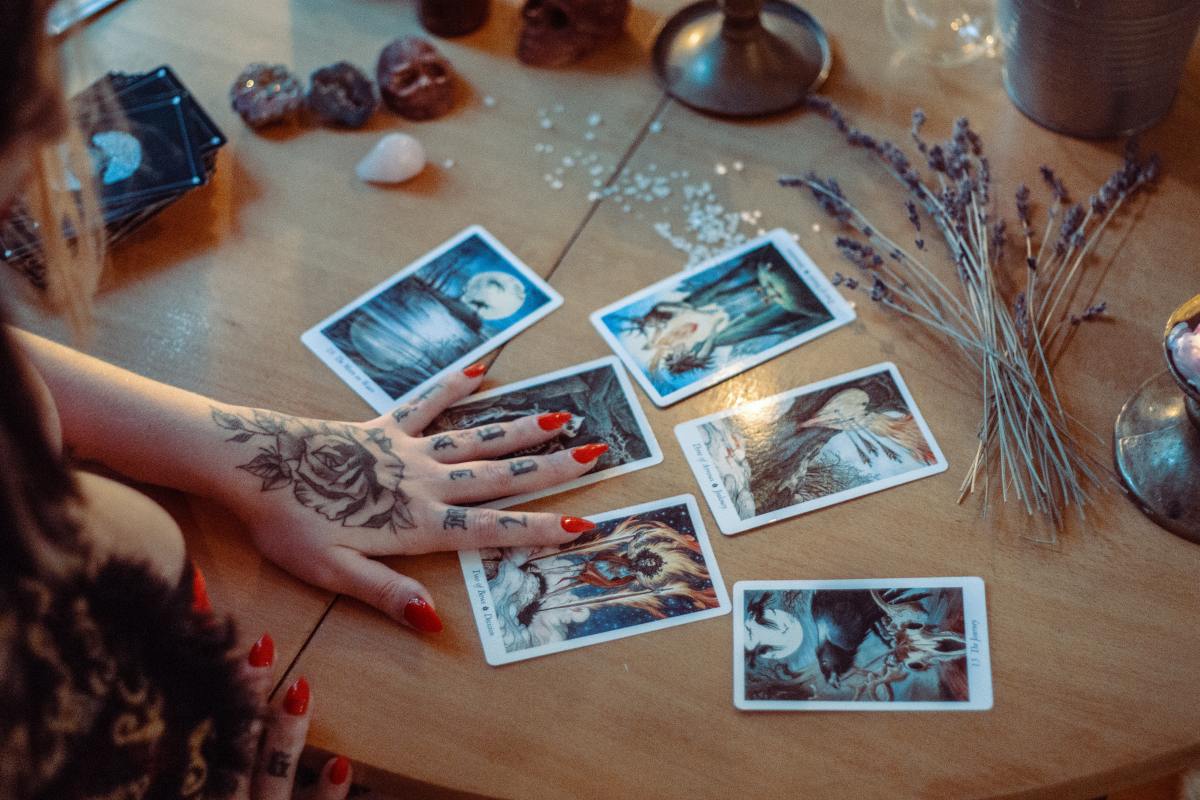The Curious History of the Tarot


Tarot reading and Tarot cards have become incredibly popular in recent years, as alternative spirituality, witchcraft, and paganism rise in popularity. It makes sense that as things like astrology, energy work, and more become more broadly known that one of the most visible and accessible gateways to that path is the Tarot. But where did the Tarot come from and how did this precursor to modern playing cards become a method of divination and self-examination?
Initially, you might assume that the Tarot has some sort of ancient origins; some people have claimed that the Tarot cards are remnants of an ancient Egyptian text that was destroyed when the library of Alexandria burned. Was it aliens? The gods? Well … no. Tarot is not ancient in origin as far as we know. It probably was invented far more recently.
I say “probably” because as it turns out, no one really knows who created the first card decks that would evolve into what we know as the Tarot. The same actually goes for regular playing cards, as it turns out. Playing cards first came to Europe sometime in the 14th or 15th century, from well … somewhere that wasn’t Europe. Whether it was Arabia or China we can’t say, though my money is on China given the distant relation between our modern card decks and games like Mah Jong. So we can’t really declare for certain which came first, Tarot or playing cards, though it could be neither and it is likely that they share some lost common ancestor.
What we do know with relative certainty is that by the fifteenth century the Europeans—Italians, in particular—were enjoying card games, some of which had cards with images inspired, in part, by Italian festivals and plays. There was a game called carta da trifoni and there were the four suits we know today, and other cards with more personality. These allegorical symbols of Fools, Devils, Death, and more possibly functioned as “trump” or winning cards in this old game. Sort of like an entire suit of aces or jokers; and yes, the playing card joker we know today is probably related to The Fool in the modern Tarot.
But back to Italy. Trifoni evolved into a different game that possibly involved using the trump cards to make up stories, and this became known as tarochi, or tarocho (meaning foolishness), and the oldest-known deck from this era belonged to the Duke of Milan and dates to around 1440. You can still buy replicas of the Visconti-Sforza deck, as it was known, today. But where the game and cards really took off was to the West, in Marseilles, where decks like the Tarot of Marseilles, printed in the 17th century, became not just a fun game, but a tool for divination.
Now, the disappointing thing here is that the Tarot isn’t some ancient Egyptian book of mysteries, or symbols from a mysterious lost culture. As far as well can tell, it’s not really that ancient, but the art of divination is. Humans have been looking to the stars and bird signs and fires and runes for a peek into the future for as long as we’ve been upright. It makes sense that people started using these cards, with their deeply allegorical symbols, as another tool to glimpse into the beyond. They were already telling stories with them, so why not use them to tell fortunes?
It was in the 18th century when the Tarot of Marseilles and other cards really became popular for games and divination. The French ran with this. A freemason named Antoine Court de Gebelin did a deep dive of the Tarot, linking it, like much of the symbolism of Freemasonry, to Eygpt. Around the same time, a French Occultist by the name Jean-Baptiste Alliette, or Etteilla, wrote the first commercially published book on occult Tarot: Etteilla, ou manière de se récréer avec un jeu de cartes (“Etteilla, or a Way to Entertain Yourself With a Deck of Cards”) and he erroneously also linked Tarot with ancient Egypt. In 1789 he published a deck specifically meant for divination. He was the one that first called the different cards the “major and minor” arcana.
Tarot remained popular throughout the 19th century and became deeply associated with magic, the occult, spirits, and everything esoteric, and that makes sense because the cards are symbolic, even the old decks. Tarot symbolism was associated with Kabbalah and more. But the rich symbolism and meaning in those decks were nothing compared with what was coming.
In 1909 a Tarot deck was commissioned by a man named Arthur Waite, who worked with the publisher William Rider to create a deck with gorgeous art by Pamela Colman Smith. Waite was an occultist, and supposedly a rival of Aleister Crowley (who developed his own deck), and was also a member of the Hermetic Order of the Golden Dawn, a not-so-secret society dedicated to ritual magic. This was a deck for magic, made with magic and all the symbolism that had been associated with the Tarot up until now, in mind.
The resulting deck, commonly known as the Rider-Waite deck, but more properly referred to as the Colman Smith, or Waite-Colman Smith deck, was a sensation because, unlike most decks, every card was illustrated with rich, deep symbolism, including the minor arcana, so that every card had meaning and could be a tool for practitioners. Even though there was a book along with the deck written by Waite, it was the allegory and pictures that truly spoke to users. Since then, Tarot has only grown in popularity and accessibility, with thousands of different decks with different themes and art offering their unique takes on the messages of the cards. But when most of us think of the Tarot, we envision Colman Smith’s unique style.
And that’s really how Tarot “works.” It’s not a means of telling the future with certainty, its a means of using art, chance, and symbols to examine yourself and your place in the universe. Cards don’t necessarily tell you “hey, you’re going to break your leg next week” but they can help you, perhaps, examine why you’ve felt so fearful. For many users of the Tarot, drawing a particular card means something very personal, and while it might not be an ancient secret, it’s certainly its own kind of magic.
(image: Pexels)
Want more stories like this? Become a subscriber and support the site!
—The Mary Sue has a strict comment policy that forbids, but is not limited to, personal insults toward anyone, hate speech, and trolling.—
Have a tip we should know? [email protected]


